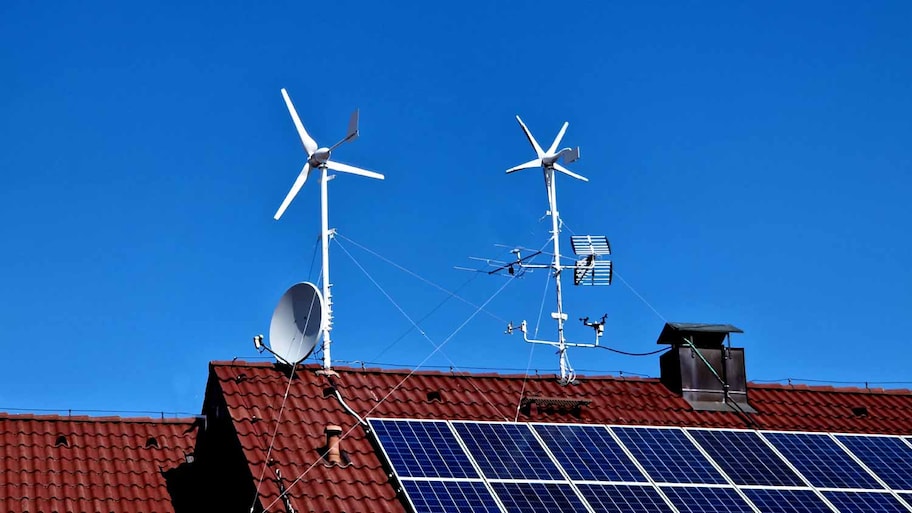
Discover the ultimate guide to waste reduction projects for a greener lifestyle with 'Homestead Heroes: The Best 10 Waste Reduction Projects For Your Green Life.'
This informative article features practical solutions and ideas for reducing, recycling, and reusing waste.
From composting kitchen scraps to reducing plastic usage, each project is designed to help you make a positive impact on the environment.
Join the movement of homestead heroes and learn how to live a more sustainable and waste-conscious life.
Composting Kitchen Waste
Composting kitchen waste is an effective and sustainable method for reducing organic waste at home. Not only does it provide numerous benefits to the environment, but it also allows individuals to take control of their waste management and contribute to a greener lifestyle.
One of the key benefits of composting is the reduction of landfill waste. By diverting kitchen scraps such as fruit and vegetable peels, coffee grounds, and eggshells from the trash, we can significantly reduce the amount of waste ending up in landfills.
Additionally, composting kitchen waste helps to create nutrient-rich soil that can be used for gardening and landscaping. There are various composting techniques available, including traditional bin composting, worm composting, and bokashi composting, allowing individuals to choose a method that suits their lifestyle and space availability.

Recycling Programs
Recycling programs play a crucial role in waste reduction efforts. There are various innovative initiatives that can be implemented to enhance their effectiveness. From implementing curbside recycling programs to establishing recycling drop-off centers, communities can actively engage in promoting recycling practices.
Innovative Recycling Initiatives
One of the most effective ways to reduce waste and promote sustainability is through the implementation of innovative recycling initiatives. These initiatives not only help divert waste from landfills but also contribute to the creation of a greener and more sustainable future.
Here are three subtopics that highlight some of the most innovative recycling initiatives:
- Innovative Upcycling Methods: From turning old clothing into trendy accessories to repurposing glass bottles into beautiful home decor, upcycling is a creative way to give new life to old items and reduce waste.
- Waste to Energy Projects: Waste to energy projects utilize advanced technologies to convert waste materials into valuable sources of energy. This not only reduces landfill waste but also provides an alternative and sustainable energy source.
- Smart Recycling Systems: Smart recycling systems use technology to optimize recycling processes. These systems include smart bins that can detect and sort recyclable materials automatically, making recycling more efficient and reducing contamination.
Community engagement plays a crucial role in promoting sustainable recycling practices and waste reduction efforts. By involving the community in recycling programs, we can create a sense of ownership and responsibility towards waste management.
Community outreach initiatives can include educational programs, workshops, and awareness campaigns that highlight the importance of recycling and waste reduction. These programs can teach individuals how to properly sort and dispose of their waste, as well as provide them with resources and tools to make recycling easier.
Additionally, community engagement can foster collaboration between residents, businesses, and local authorities, leading to the development of effective waste management strategies. By working together, communities can create a positive impact on the environment and inspire others to adopt sustainable practices.
Reusing Materials
To maximize waste reduction efforts and promote sustainability, it is essential to explore innovative ways of reusing materials through various projects. Reusing materials not only helps reduce waste but also saves money and promotes a more sustainable lifestyle.

Here are three practical ideas to inspire you:
- Upcycling Projects: Upcycling is the process of transforming old or discarded items into something new and useful. Get creative with repurposing old furniture, turning glass jars into storage containers, or making artwork out of scrap materials.
- Secondhand Shopping: Instead of buying new, consider shopping for secondhand items. Thrift stores, yard sales, and online marketplaces are great places to find gently used clothing, furniture, and household items. Not only will you save money, but you'll also prevent these items from ending up in landfills.
- DIY Crafts: Explore your creative side and try your hand at DIY crafts. From making your own candles and soap to creating unique jewelry from old buttons, there are endless possibilities for transforming materials into something new and beautiful.
Worm Farming
Worm farming offers a sustainable solution for waste reduction and soil enrichment. Worm composting, also known as vermicomposting, is a technique that utilizes worms to convert organic waste into nutrient-rich compost. It is a simple and effective way to reduce the amount of waste that goes to landfills while creating a valuable resource for your garden.
To start worm farming, you will need a worm bin or a composting system specifically designed for vermicomposting. Place your organic waste, such as vegetable scraps, coffee grounds, and shredded paper, in the bin along with the worms. The worms will feed on the waste and produce worm castings, which are rich in nutrients and beneficial microorganisms.
Maintaining a worm farm is relatively easy. Keep the bedding moist, provide enough ventilation, and avoid adding meat, dairy, or oily food to prevent attracting pests. Regularly harvest the worm castings to use as a natural fertilizer for your plants.
Reducing Plastic Use
One effective waste reduction project that complements worm farming is the reduction of plastic use. Plastic waste has become a major environmental concern, with single-use plastics being a significant contributor. By reducing our reliance on plastic, we can minimize its negative impact on the planet and create a greener future.
Here are three practical ways to reduce plastic use:
- Choose reusable alternatives: Opt for reusable shopping bags, water bottles, and coffee cups instead of single-use plastic versions.
- Avoid unnecessary packaging: Look for products with minimal or eco-friendly packaging options to reduce plastic waste.
- Support businesses with sustainable practices: Seek out companies that prioritize eco-friendly packaging and support their efforts.
Repurposing Old Furniture
The repurposing of old furniture is a valuable waste reduction project that can bring new life to discarded items in a sustainable and creative manner. Instead of throwing away old furniture, upcycling projects offer an opportunity to transform them into something functional and beautiful.

Furniture restoration is a popular trend that allows individuals to express their creativity while reducing waste. With a little imagination and some basic DIY skills, old dressers can be turned into stylish storage units, wooden pallets can become unique coffee tables, and vintage chairs can be given a modern twist with a fresh coat of paint.
Not only does repurposing old furniture save money, but it also reduces the demand for new furniture production, contributing to a more sustainable and eco-friendly lifestyle.
Homemade Paper
Homemade paper is a great way to reduce waste and make use of materials that would otherwise end up in the landfill. Not only does recycling paper save trees, but it also conserves water and energy.
The DIY paper-making process is simple and can be done with basic household items, allowing you to create unique and personalized paper for various purposes.
Additionally, exploring creative paper alternatives like seed paper or banana paper can further contribute to waste reduction in a creative and eco-friendly way.
Recycled Paper Benefits
Creating homemade paper through the process of recycling offers numerous benefits for waste reduction and environmental sustainability. By reusing paper products that would otherwise be discarded, we can significantly reduce the amount of waste that ends up in landfills. Additionally, producing homemade paper allows us to minimize our reliance on virgin materials, such as trees, which helps to conserve natural resources and protect ecosystems.
Here are some key benefits and production methods of recycled paper:

- Reduces waste: Recycling paper reduces the amount of waste that goes to landfill, helping to preserve valuable space and reduce pollution.
- Conserves resources: By reusing paper fibers, we can reduce the demand for virgin materials like trees, water, and energy.
- Mitigates climate change: Recycling paper requires less energy and produces fewer greenhouse gas emissions compared to producing paper from virgin materials.
Incorporating homemade paper into our daily lives not only helps us minimize waste but also contributes to a more sustainable and eco-friendly future.
DIY Paper-Making Process
Utilizing recycled paper fibers, the DIY paper-making process offers a sustainable solution for reducing waste and conserving resources. By learning paper making techniques, you can create your own homemade paper and contribute to the production of sustainable paper products.
The process involves collecting used paper, such as newspapers or old notebooks, and breaking it down into small fibers. These fibers are then mixed with water to create a pulp, which can be molded into sheets or pressed into molds to create different shapes. Adding natural dyes or pressed flowers can create unique designs and patterns.
Once dried and pressed, the homemade paper is ready for use in various applications, such as writing, crafts, or gift wrapping. By making your own paper, you not only reduce waste but also have the freedom to create personalized and eco-friendly products.
Creative Paper Alternatives
The process of making homemade paper offers an innovative and sustainable alternative to traditional paper products, contributing to waste reduction and resource conservation. By creating your own paper, you can significantly reduce the demand for commercial paper production and its associated environmental impact.
Here are some creative paper alternatives that you can easily make at home:
- Seed paper: Embed seeds into the paper pulp to create eco-friendly packaging or sustainable gift wrapping. After use, the paper can be planted, allowing the seeds to grow into beautiful plants.
- Fabric paper: Combine recycled fabric scraps with paper pulp to create a unique and textured material that can be used for various crafts and artistic projects.
- Herb-infused paper: Add dried herbs or flowers to the paper pulp for a fragrant and decorative touch. This paper can be used for homemade cards, bookmarks, or gift tags.
DIY Cloth Bags
Designing and sewing cloth bags offers an eco-friendly alternative to single-use plastic bags. By creating your own cloth bag patterns, you can customize the size, shape, and design to suit your needs and personal style.

Using cloth bags has numerous benefits, both for the environment and your daily life. Firstly, cloth bags are reusable, reducing the demand for plastic bags and ultimately reducing waste. They are also sturdier and more durable than plastic bags, making them ideal for carrying heavy items.
Additionally, cloth bags can be easily washed and maintained, ensuring their longevity. Using cloth bags not only helps to reduce plastic waste but also promotes sustainable living and a healthier planet.
Reducing Food Waste
Reducing food waste is not only beneficial for the environment but also for our wallets.
Two key strategies to implement are creative composting solutions and meal planning.
By composting food scraps, we can turn waste into nutrient-rich soil for our gardens, reducing the need for chemical fertilizers.
Additionally, planning our meals in advance helps us use up ingredients before they spoil, minimizing food waste and saving money in the process.
Creative Composting Solutions
To effectively minimize food waste, incorporating composting into your daily routine is an essential practice that can be done regularly. Composting not only reduces the amount of waste that goes into landfills but also provides valuable nutrients for your garden.

Here are three creative composting solutions that can help you reduce food waste and enhance your organic gardening:
- Compost Bin: Setting up a compost bin in your backyard or even using a small indoor composting system can turn your food scraps into rich compost. This compost can then be used to nourish your plants and improve soil health.
- Vermicomposting: Using worms to break down food waste is a highly efficient and odor-free method. Vermicomposting is perfect for those with limited space or living in urban areas.
- Bokashi Composting: Bokashi is a Japanese method that involves fermenting food waste using a specialized bran mixture. This process is quick and can handle a wider range of food waste, including meat and dairy products.
Meal Planning Strategies
One effective strategy for reducing food waste is implementing a systematic meal planning approach. By planning your meals ahead of time, you can ensure that you only buy the ingredients you need and use up any leftovers in future meals.
Start by taking inventory of your pantry and fridge to see what ingredients you already have. Then, plan your meals for the week, considering the ingredients you already have and what needs to be used up soon. Make a detailed shopping list based on your meal plan, and stick to it when you go grocery shopping. This way, you'll avoid buying unnecessary items that may end up going to waste.
Additionally, consider batch cooking and freezing meals for later use, so you can make the most of your ingredients and reduce food waste.
A highly effective method for waste reduction in your green life is implementing a backyard metal recycling project. Not only does it help to reduce waste, but it also provides numerous opportunities for backyard metal repurposing and metal upcycling.
Here are three ways you can make the most of your backyard metal recycling project:
- Create a DIY metal sculpture garden: Take those old metal scraps and transform them into unique sculptures to add a touch of art and creativity to your outdoor space.
- Build a raised bed garden using metal troughs: Repurpose old metal troughs into raised beds for growing vegetables, herbs, and flowers. It's a sustainable and stylish way to utilize waste metal.
- Make outdoor furniture from reclaimed metal: Give new life to discarded metal objects by using them to create functional and stylish outdoor furniture pieces like chairs, tables, and benches.
Frequently Asked Questions
How Can I Involve My Children in Composting Kitchen Waste?
Involving children in waste reduction activities, such as composting kitchen waste, has numerous benefits. It teaches them about environmental responsibility, encourages their participation in sustainable practices, and fosters a sense of accomplishment in contributing to a greener future.

Are There Any Recycling Programs That Accept Unusual Materials Like Electronics or Batteries?
Electronics recycling programs and battery recycling programs are available to responsibly dispose of these unusual materials. These programs ensure that electronic waste and batteries are recycled and not improperly disposed of, promoting environmental sustainability and reducing potential hazards.
Can I Reuse Materials From Construction Projects in My Home?
Reusing construction materials can provide numerous benefits, such as reducing waste and saving money. Upcycling these materials in your home can contribute to a more sustainable lifestyle while adding unique and personalized touches to your living space.
What Are the Benefits of Worm Farming and How Do I Get Started?
The benefits of worm farming include organic waste reduction, nutrient-rich compost production, and soil improvement. To get started, you will need a worm bin, bedding material, food scraps, and red worms. Follow a step-by-step guide for successful worm farming.
How Can I Repurpose Old Furniture to Give It a New Life?
Repurposing furniture ideas can give old pieces a new life. Techniques like painting, staining, or reupholstering can transform worn-out furniture into stylish and functional pieces. Explore creative options to reduce waste and create a unique and sustainable home.
 Family Craft ProjectsHome ImprovementCooking and BakingReuse and RecycleDIY GiftsEco-Friendly ProjectsDIY Home SolutionsSeasonal ActivitiesFun and GamesLearn TogetherPrivacy PolicyTerms And Conditions
Family Craft ProjectsHome ImprovementCooking and BakingReuse and RecycleDIY GiftsEco-Friendly ProjectsDIY Home SolutionsSeasonal ActivitiesFun and GamesLearn TogetherPrivacy PolicyTerms And Conditions

 Family Craft ProjectsHome ImprovementCooking and BakingReuse and RecycleDIY GiftsEco-Friendly ProjectsDIY Home SolutionsSeasonal ActivitiesFun and GamesLearn TogetherPrivacy PolicyTerms And Conditions
Family Craft ProjectsHome ImprovementCooking and BakingReuse and RecycleDIY GiftsEco-Friendly ProjectsDIY Home SolutionsSeasonal ActivitiesFun and GamesLearn TogetherPrivacy PolicyTerms And Conditions
